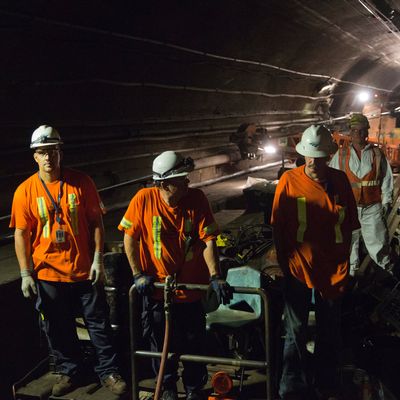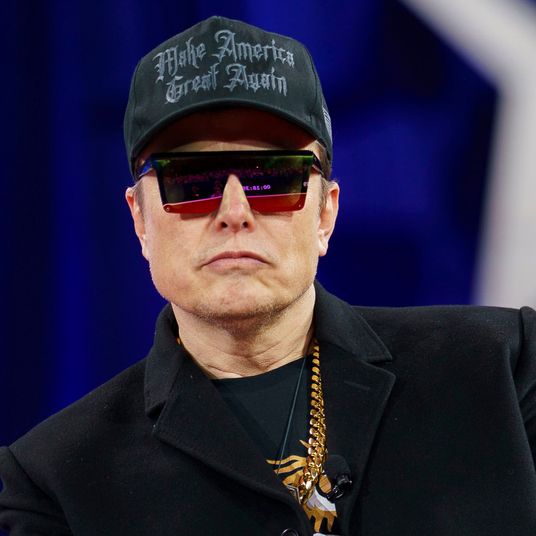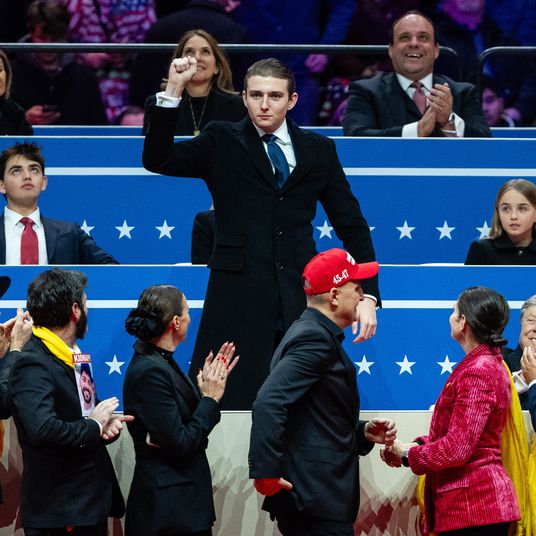
President Donald Trump has vowed to fix America’s “crumbling” infrastructure — a proposal even Democratic leadership said they’d be willing to work with the administration to get done. On Tuesday, Senate Democrats threw down the gauntlet first, releasing a $1 trillion infrastructure ten-year plan to fix roads, bridges, broadband networks, VA hospitals, and schools. Democratic lawmakers say the plan would create 15 million jobs. “We’re challenging the president — he talked about it in his campaign — to join us in this and if he does we’ll work with him,” Senate Minority Leader Chuck Schumer said.
The Trump administration also appears to have the outlines of a plan, albeit a slightly different one. According to the Kansas City Star, team Trump has put together a list of 50 “emergency and national security” infrastructure projects across the United States, at a price tag of $137.5 billion, which would likely come in the form of tax credits to developers. The document, passed among congressional and business leaders, indicates that the private sector would fund 50 percent of the costs of these shovel-ready undertakings. The then-Trump transition team also reportedly handed another list — the same except for two projects — to the National Governors Association in December. According to a letter obtained by McClatchy, the NGA had asked governors for feedback on the document, and asked them to submit between three and five state projects that could also be contenders for an infrastructure plan. The letter said that a “bipartisan infrastructure commission” would do the final vetting on all projects, adding that once Trump took office there would be a more “formal process” to submit projects for consideration.
No. 1 on the Trump list — and it’s not clear how final this list is — would be a major boon to the New York area. That’s the Gateway Program, which would build a new Hudson River rail tunnel to double the capacity of Amtrak and New Jersey Transit trains between New York and New Jersey. It would also provide critical repairs on the century-old existing tunnel that was badly damaged by Hurricane Sandy in 2012. The program first came into existence in 2011, after New Jersey Governor Chris Christie nixed a different plan the year before to build a Hudson tunnel. Figuring out how to pay for this massive project has been one of its primary sticking points, but that got a major lift toward the end of the Obama administration, with the federal government pledging to split funding with New York and New Jersey — though it’s still unclear where all the state money is going to come from, because the cost is huge: as high as $24 billion, and getting more expensive the longer the wait. Trump’s list puts the price tag at $12 billion (it’s apparently just accounting for the federal government’s share, or the math is way off), and estimates the program will create 15,000 new, direct jobs. There’s at least bipartisan agreement that this project needs to get done, and fast. Schumer told the Washington Post in October that “we have to do it or the economy will collapse.”
Trump’s other top-50 projects include the more than 50-year-old Brent Spence Bridge (No. 2), an out-of-date span that links Ohio and Kentucky and whose upper deck has shed concrete; $8 billion in repairs to 15 structurally deficient bridges on the 1-95 outside Philadelphia (No. 6) that would create 15,800 direct jobs; and a replacement for the nation’s Air Traffic Control system (No. 8) at the cost of $10 billion. Also on the list, at No. 18: the Second Avenue Subway, specifically Phase 2 (96th to 125th Street) and Phase 3 (63rd to Houston Street). The Trump document lists the cost at $14.2 billion (Phase 1, newly opened, cost about $4.5 billion and took a long time), and says construction would create 16,000 new jobs. (A 16,000 number appears to be an estimate from Congresswoman Carolyn Maloney’s office at the start of Phase 1.) Also among the candidates for construction or repairs: dams; airports in St. Louis, Seattle, and Kansas City; station improvements at D.C. and Chicago’s Union Stations; a high-speed rail line in Texas; the Atlantic Coast Pipeline; and even a wind-turbine farm in Wyoming.
Trump and the Democrats will likely agree on what needs to be fixed, and on job creation. But a likely sticking point is going to be how to pay for all of these projects. The Democrats’ plan would rely on federal funding — which Senate Republicans have already rejected because it’s the act of spending government money. Trump’s plan would rely heavily on tax credits for developers, the costs of which, his economic advisers say, will be made up in tax revenue from a bolstered economy. Private-public partnerships are commonplace and necessary, but the problems with funding the bulk of an infrastructure plan through this method are myriad — not least of which is that fixing and maintaining rusted-out bridges or deteriorating roads doesn’t bring in consistent revenue, unless there are tolls. So this infrastructure battle is just beginning — while highways continue to fall apart.





























